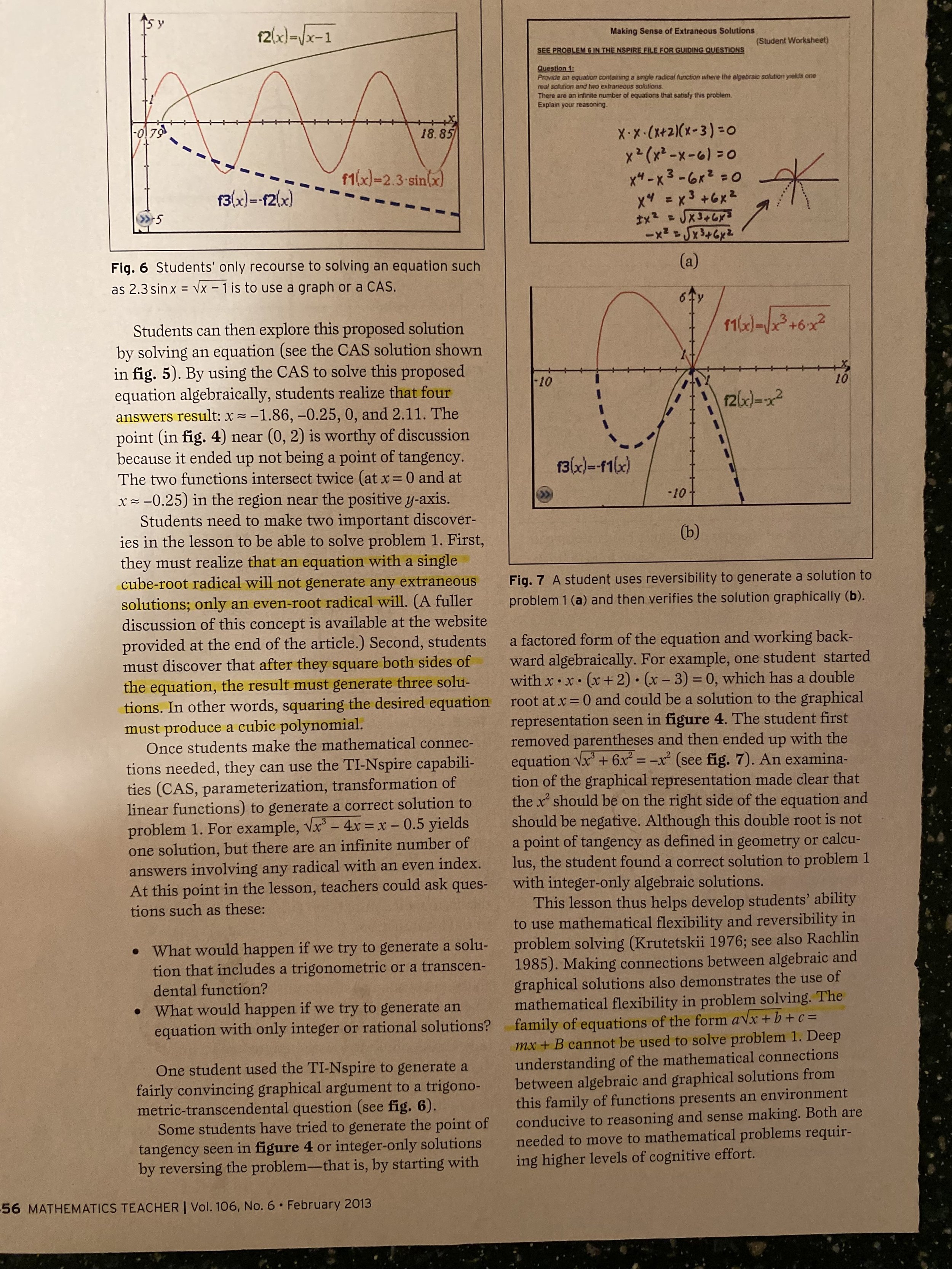More Radicals - Dealing with Extraneous Solutions
A couple of weeks ago, we were working on simplifying radical expressions in my Algebra II class. Last week we began to focus on solving various types of equations containing radicals or rational exponents. I made sure to emphasize types of radical equations that involve FOIL-ing as part of the solution process, like the ones below:
When there is something like ‘x-2’ on one side of an equation and a radical on the other side, and they go to square each side, it’s very common for them to just square each term to become ‘x^2 -4’ instead of turning it into the trinomial ‘x^2 - 4x + 4.’ We go through various ways of showing WHY this cannot be true, but some of them still seem to keep forgetting the proper process.
Then I bring up the term ‘extraneous solutions,’ which many seem to have heard before, but they typically do not really know what it means. To begin the exploration of what exactly an extraneous solution is, we do the activity from North Carolina School of Science and Math, posted HERE online and in PDF form HERE (as a side note, NCSSM has excellent application problems posted on their website for several different math subjects).
I have students work through the pendulum problem as well since it’s a great review of regression on the calculator and a nice application of radicals. Underneath the pendulum problem are two radical equations. I have them solve these two equations and then we begin the graphing calculator exploration of HOW extraneous solutions work, using the NCSSM outline in the PDF above. After we get through two or three demo problems, I have students complete THIS DESMOS activity to add imaginary solutions to the discussion, just so they don’t think that extraneous solutions are the same as imaginary/complex solutions.
This then opens the door to a GREAT multi-solution, open-ended graphing calculator exploration afterwards, posted below and WORD form HERE.
Below is the extended version I made once I realized most students were ready to explore more complicated situations and incorporate different types of functions, like sinusoids:
I created the above two worksheets based on an old NCTM article posted below, back before NCTM changed to its current K-12 magazine format. This was a really neat article and completely changed how I think about and teach extraneous solutions. This multi-solution worksheet is the final activity my students do in our unit on Exponents and Radicals.
Now it’s on to Exponential Functions!









